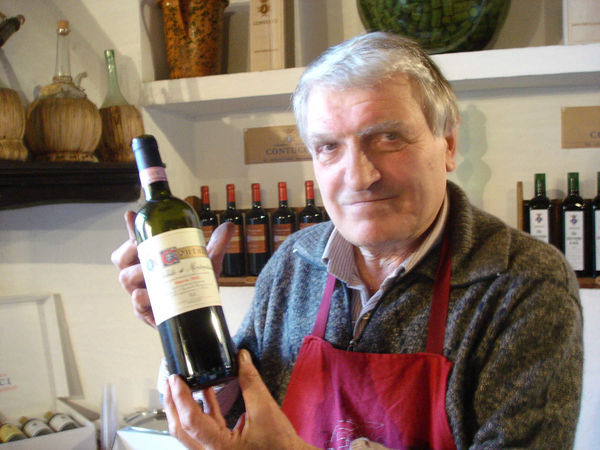Bella Tuscany: ‘Here Begins Prosciutto’
By Rick StevesAfter I check into my Tuscan farmhouse inn, my host, Signora Gori, takes me on a welcome stroll. Our first stop is a sty dominated by a giant pig. "We call him 'Pastanetto' — 'the little pastry.'" While the scene through my camera's viewfinder is pristine and tranquil, the soundtrack is not. As a horrendous chorus of squeals comes from a rustic slaughterhouse on the horizon, she says, "This is our little Beirut."
I stow my camera, deciding to simply absorb the attention I'm enjoying from a host who is both old-money-elegant and farmhouse-tough. The Gori family estate is Tuscany in the rough: a working farm…no TV, no cooking classes, lots of real culture.
Hiking to the slaughterhouse, we enter a room dominated by a stainless-steel table piled with red sides of pork. Signora Gori says, "Here begins prosciutto." Burly men in aprons squeeze the blood out of hunks of meat the size of dance partners. Then they cake the ham hocks in salt to begin a curing process that takes months. While the salt helps cure the meat, a coating of pepper seals it.
In spooky but great-smelling rooms, towering racks of ham hocks age. A man, dressed and acting like a veterinarian, tests each ham by sticking it with a horse-bone needle and giving it a sniff.
Back outside, Signora Gori takes me into the next barn, where fluffy white lambs jump to attention in their hay, kicking up a sweet-smelling golden dust. Backlit by stray sunbeams, it's a dreamy, almost biblical scene. Picking up a baby lamb and giving it an Eskimo kiss, she explains, “We use unpasteurized milk in making the pecorino cheese. This is allowed, but with strict health safeguards, I must really know my sheep.”
This close-to-the-land-and-animals food production is part of Italy's Slow Food movement. People who believe there's more to life than increasing its speed produce and serve food in the time-honored way. It may be more labor-intensive and expensive, but it's tastier and — just as important — consumers are more closely connected to their food.
Tuscany is trendy. The nearby town of Greve — a facade of Tuscan clichés just south of Florence — has enough parking and toilets to handle all the tour groups. The flood of Under the Tuscan Sun fans coming in to sample the Tuscan good life — and prosciutto — flows into towns like Greve. And, happy to oblige, a vast prosciutto shop, with boastful newspaper clippings on its door and samples under glass, is primed for the next tour group. Tuscany is a land of high contrasts — either extremely touristy, or seductively in the rough. My stroll on the Gori farm reminds me how especially here, it's critical to venture off the beaten path.
Strolling down another lane, we observe the family's team of vintners just as Signora Gori's brother empties a bucketful of purple grapes into the dump truck. The load tumbles from the truck into a grinder, which munches through the bunches, spitting stems one way and juice with mangled grapes the other. Following pipes of this juice into a cellar, the brother explains that wine-making is labor-intensive, "but right now, the grapes are doing all the work."
And as the new grapes ferment, we taste the finished product. A key word for your Tuscan travels is corposo — full-bodied. Lifting the elegant glass to my lips, I sip the wine while enjoying the pride in the eyes of those who made it. Satisfied, I say, "Corposo." They say, "Si, bello."
That night at dinner, we're joined by the rest of the Gori family. The two sons dress and act like princes home on break from some Italian Oxford. Sitting down to a classic Tuscan table — simplicity, a sense of harmony, and no hurry…with a glass of good red wine — I nod to my hosts, knowing I've found the art of Tuscany. Dipping my bread in extra-virgin olive oil and savoring each slice of prosciutto, it's clear: Great wine goes best with simple food.
Full and content, we sip port and enjoy a backgammon board that has provided after-dinner fun for 200 years in this very room. Surrounded by musty portraits putting faces on this family's long lineage, alongside a few guns used in Italy's 19th-century fight for independence, I realize that this — a special moment for me — is just another night on the farm here in the Gori home.
Corposo. That's how I like my wine…and my Tuscan travels.


